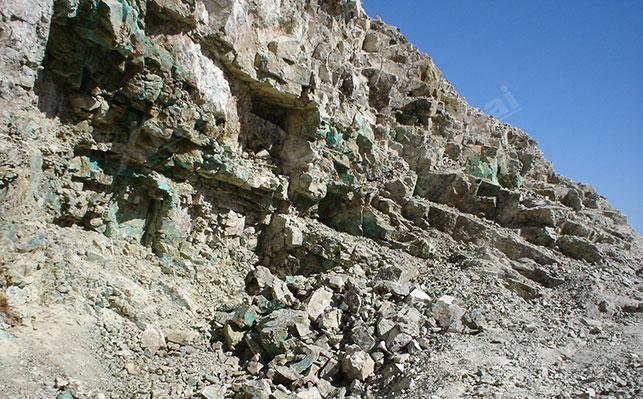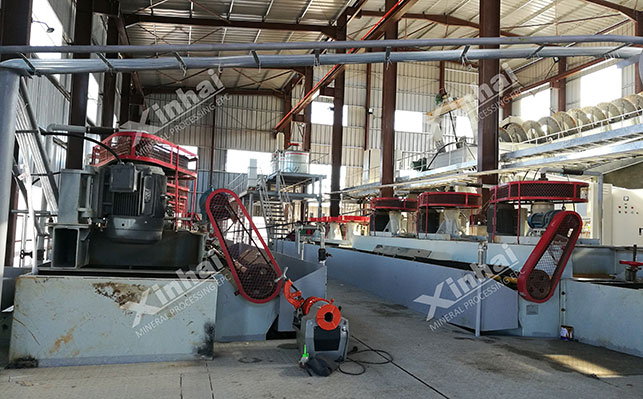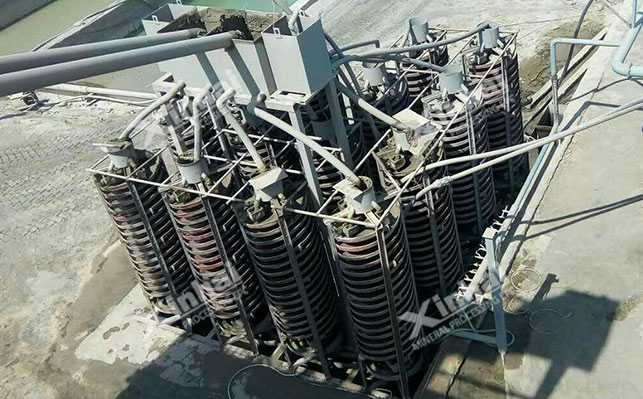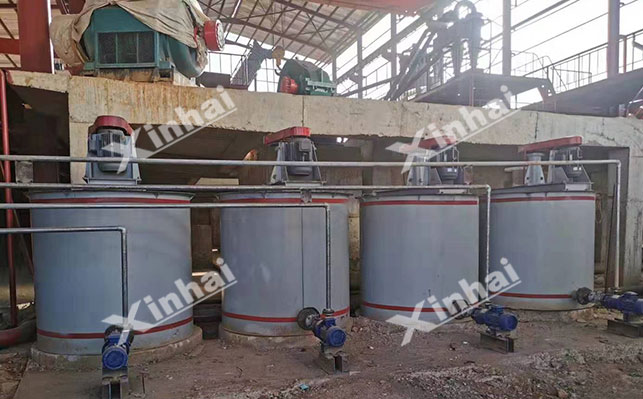
15311826613
Click to add WeChatThe price of gold continues to soar, and the price trend of silver has also fluctuated. The increase is not large, but it is also an upward trend. Silver, which is also a hard currency, is widely used in electronics, photography, jewelry, chemicals, etc. With the continuous growth of global demand for silver, the effective development of silver mines is particularly important, but there are many types of silver deposits, and there are many differences in beneficiation methods. In order to help everyone quickly understand silver ore beneficiation, this article will give an in-depth introduction, from the aspects of silver ore type, silver ore beneficiation method, process flow and silver ore beneficiation equipment.
The common silver deposit types are independent silver ore, associated silver ore and complex silver ore.

Independent silver ore: mainly silver, with a high content, but this type of silver ore often coexists with gangue minerals such as quartz and calcite. Quartz has a high hardness and stable chemical properties, and is difficult to be destroyed and separated during the beneficiation process; calcite is relatively soft, and may have a certain impact on the dissociation of silver minerals during grinding and other processes.
Associated silver ore: It is an important component of silver ore resources. Silver exists as an associated mineral of copper, lead, zinc and other metal minerals, and its content is usually low. Silver is often found in carrier minerals such as galena (PbS), chalcopyrite (CuFeS₂), sphalerite (ZnS), and closely coexists with these minerals. This symbiotic relationship makes the beneficiation of associated silver ore complicated, because while recovering silver, the recovery and separation of the main metal also need to be considered. The requirements for the beneficiation process of this type of silver ore are not only to achieve the separation of silver from other minerals, but also to consider the effective recovery of other valuable elements.
Complex silver ore: It refers to the coexistence of silver minerals with a variety of metal minerals (such as copper, lead, zinc, arsenic, etc.), and the ore composition is extremely complex. In this type of ore, in addition to common metal minerals, it may also contain some rare metals and precious metals, such as gold, bismuth, antimony, etc.

Silver ore flotation is widely used. This method can be used for most silver. Its principle is to use the difference in surface physical and chemical properties between silver minerals and gangue minerals. By adding suitable reagents, the hydrophobicity of the silver surface is changed, so that it floats with bubbling to form a stable foam layer, thereby achieving separation from gangue minerals.
Flotation method: Commonly used methods include single flotation method, gravity-flotation combined method, and flotation-oxidation method.
Flotation reagents: Collectors (butyl ammonium black medicine, aniline black medicine, ethyl xanthate, butyl xanthate, etc.), adjusters (lime, sodium carbonate, copper sulfate, etc.), inhibitors (sodium sulfide, sodium sulfite, starch, etc.) and foaming agents (pine oil, MIBC, etc.).
Silver ore flotation process: The ore is crushed by a crusher and a ball mill to achieve the monomer dissociation between minerals, and then fed into a stirring tank for pulp and reagent mixing, and fed into a flotation machine for flotation. The obtained flotation silver concentrate is then concentrated and dehydrated to finally achieve silver flotation.
Flotation equipment: aerated stirring flotation machine (XCF type, KYF), mechanical stirring flotation machine (SF type, JJF type, BF), flotation machine, etc.

Gravity separation is mainly used to recover coarse silver minerals, and is often used in conjunction with flotation. The principle is to use the difference in density between silver minerals and gangue minerals to stratify mineral particles of different densities in the gravity field, thereby achieving separation.
Silver ore gravity separation process: After the raw ore is coarsely and finely crushed (25-40mm), it is fed into the ball mill for fine grinding (-0.074mm accounts for 60%-80%) to dissociate the mineral monomers, and then gravity separation (shaking table, spiral classifier, centrifuge) is carried out according to the actual situation to achieve effective separation of silver minerals and gangue minerals, obtain coarse silver minerals, and then dehydrate the concentrate.
Gravity separation equipment: There are shaking tables, spiral concentrators, centrifugal concentrators, etc. Among them, the shaking table uses the reciprocating motion of the bed surface and the action of the lateral water flow to make the mineral particles on the bed surface layered according to density and particle size to achieve separation; the spiral concentrator uses the centrifugal force and gravity of the mineral particles in the spiral groove to make the mineral particles of different densities move in different trajectories in the groove, thereby achieving separation; the centrifugal concentrator uses the centrifugal force field to strengthen the gravity sedimentation of the mineral to achieve separation. Gravity separation is generally suitable for recovering fine silver minerals.
The oxidation method is mainly used to treat difficult-to-select silver ores, especially when silver minerals are embedded in gangue such as quartz. The oxidation method can be divided into chemical oxidation and biological oxidation.
Chemical oxidation: Commonly used oxidants include air, oxygen, hydrogen peroxide, potassium permanganate, etc. During the oxidation process, the oxidant reacts chemically with the silver mineral, destroys the bond between the silver mineral and the gangue mineral, and exposes the silver mineral, which is convenient for subsequent leaching and recovery.
Biological oxidation: It uses the metabolism of microorganisms (such as Thiobacillus ferrooxidans, Thiobacillus thiooxidans, etc.) to oxidize the sulfide in the silver mineral into sulfate and release silver ions at the same time. Biological oxidation has the advantages of low energy consumption and low environmental pollution, but the oxidation speed is relatively slow and requires a long reaction time.

Combined beneficiation within the realm of silver ore processing implies the utilization of two or more beneficiation techniques in tandem. This approach is designed to fully capitalize on the strengths of each process, thereby enhancing the recovery rate of silver ores. Common combined beneficiation processes for silver ores are as follows: flotation - gravity separation, flotation - oxidation, and the flotation - gravity separation - oxidation combined process, among others. Specifically, the flotation - gravity separation combined process is well - suited for ores where the distribution of silver minerals is uneven. Initially, coarse - grained silver minerals are retrieved through gravity separation, and subsequently, fine - grained silver minerals are recovered by flotation. The flotation - oxidation combined process, on the other hand, is applicable for processing ores that contain refractory silver minerals. Most of the silver minerals are first recovered via flotation, and then the flotation tailings or concentrates are subjected to oxidation treatment to further extract silver.
The above two modules introduce the types of silver ore and the beneficiation methods of silver ore. In actual beneficiation plants, due to the different properties of silver ores, the required process plans, processes and equipment are different. You cannot blindly select processes according to the composition of the ore. If you want to obtain an ideal silver recovery rate, it is recommended to conduct beneficiation tests. Through experimental analysis, a beneficiation method suitable for your own silver mine can be designed. At the same time, a complete set of silver ore beneficiation equipment should be configured according to the process to obtain better results.